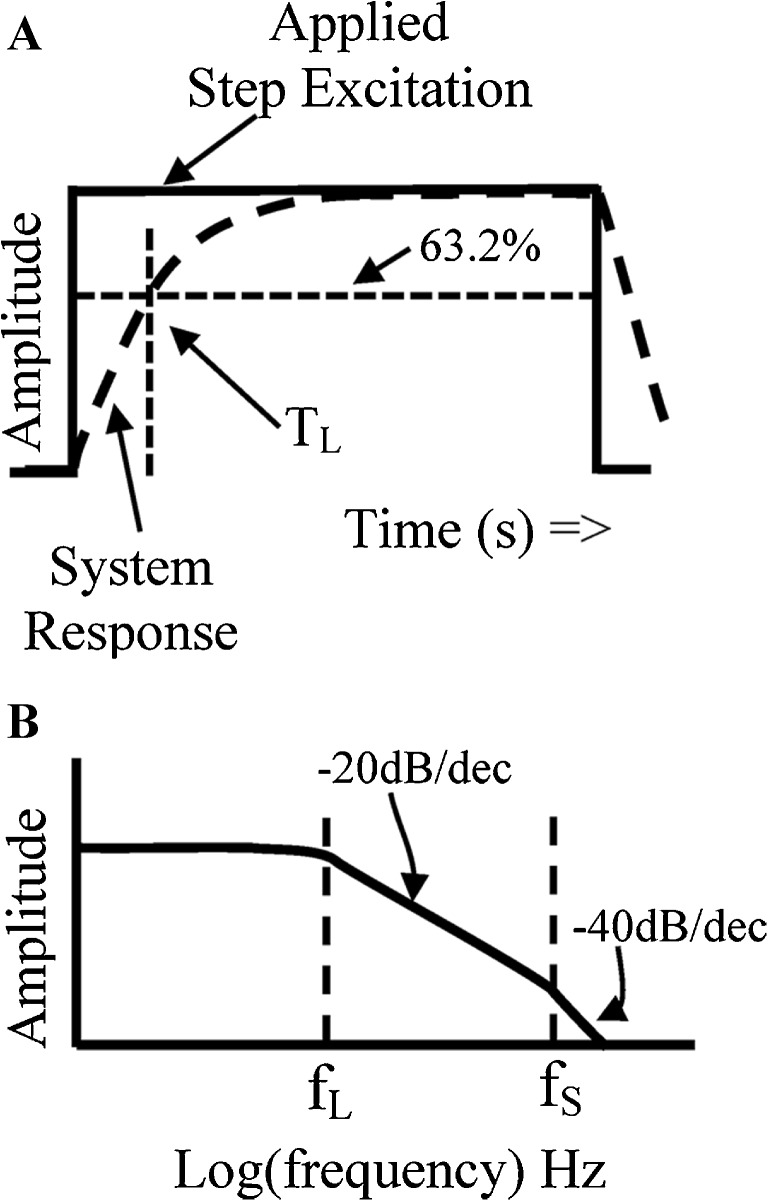FIG. 2.
Dynamic behavior, bandwidth, and time constants associated with an overdamped second-order mass-spring mechanical system. A Hypothetical otoconial layer (OL) mechanical response (DASHED LINE) to an applied step excitation (SOLID LINE). The shape of the overdamped OL system response is governed primarily by the long time constant TL. B Low pass frequency response of otoconial mass-spring mechanical system (see also Appendix-Figures 8 and 9). Hypothetical relationships between long and short time constants (T L, T S) and associated frequency corners and rolloff slopes are shown. Upper frequency corner ( in Hz) and lower frequency corner ( in Hz). fL is the −3 dB point where at frequencies immediately above this break point the amplitude falls off at −20 dB/frequency decade (−6 dB/octave). Above the second break point, fS, amplitudes fall off at −40 dB/decade (−12 dB/octave). Note that fs is above frequency regions of practical importance and has little if any effect on the roll off immediately above fL. The current estimate for the ratio of the two break points is fs/fL = ωS/ωL = 10 (see Appendix-Figure 8).

